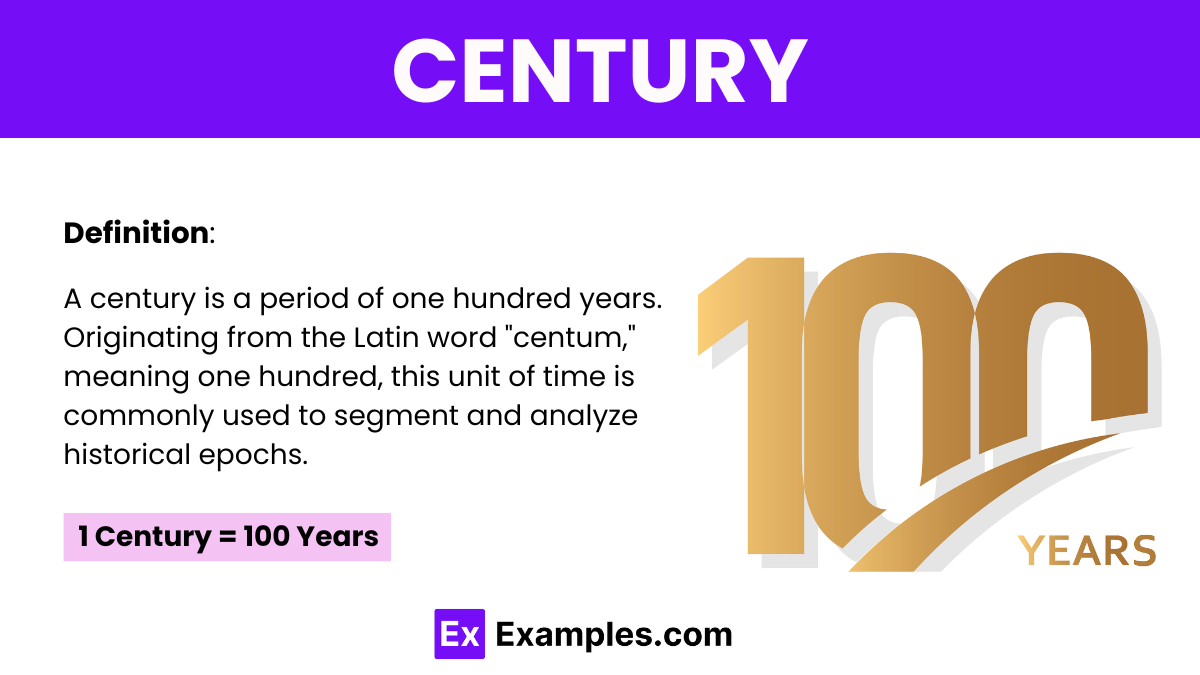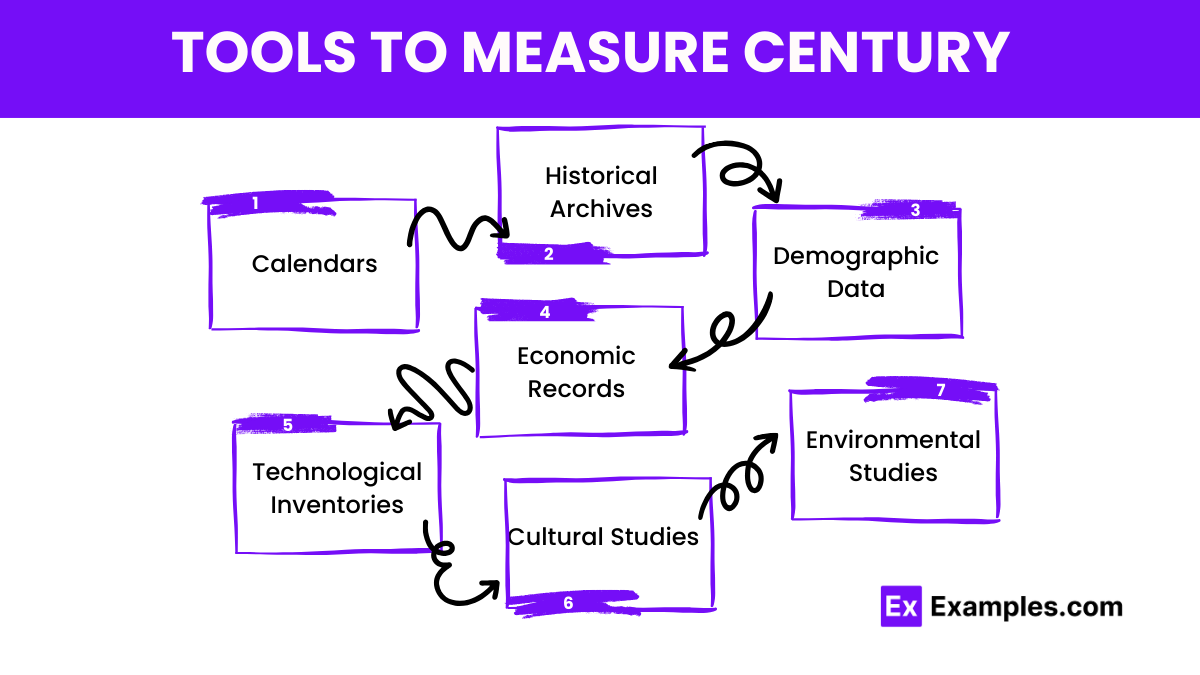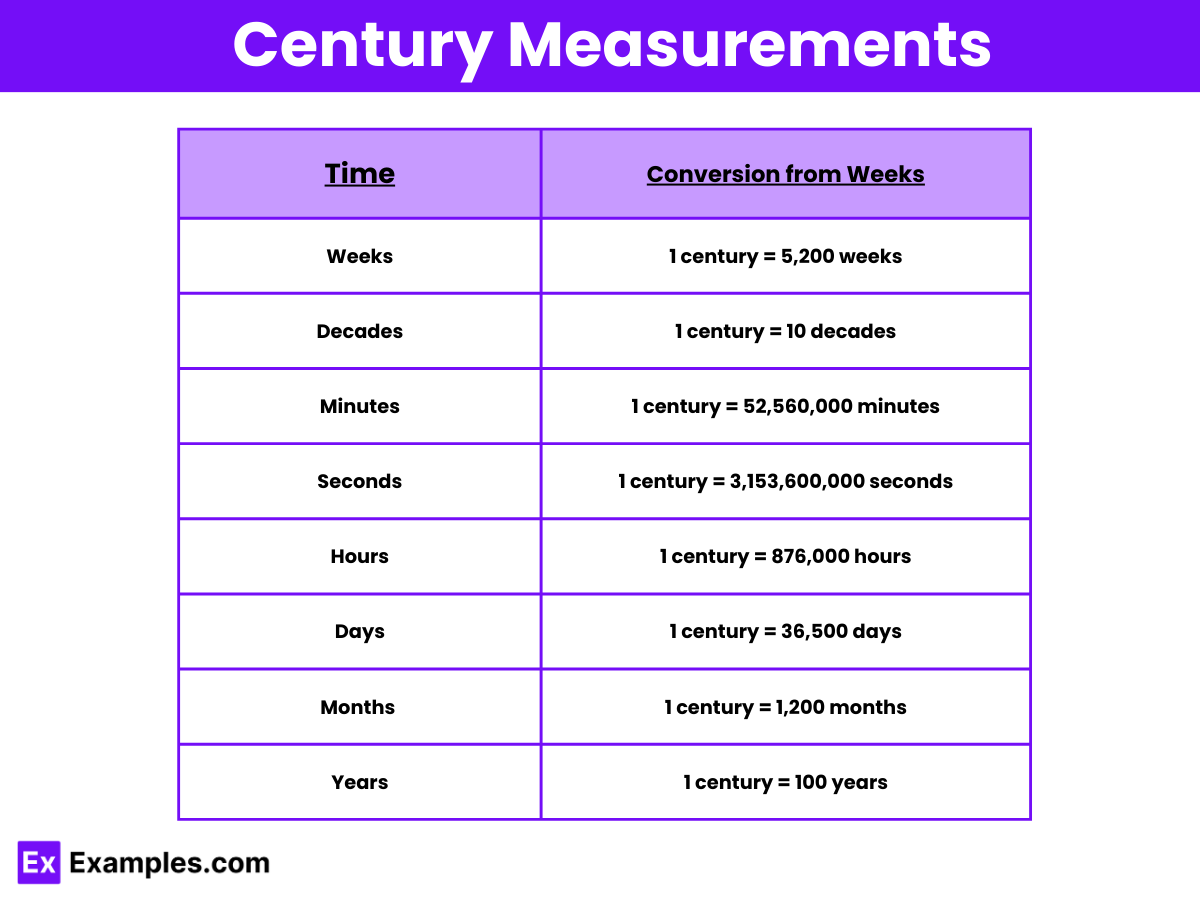How many years are there in a century?
90
100
110
120


A century is a period of one hundred years. Originating from the Latin word “centum,” meaning one hundred, this unit of time is commonly used to segment and analyze historical epochs. For example, the 20th century spans from 1901 to 2000, encompassing significant global events and transformations. Therefore, by studying centuries, historians gain insights into long-term changes, helping us understand the progression of societies and cultures. This approach allows for a detailed exploration of periods marked by notable advancements and shifts, providing a clearer picture of historical continuity and disruption.
For instance, the 19th century, ranging from 1801 to 1900, is recognized for industrial advancements and social reforms. Moreover, this timeframe provides a structured lens to examine shifts that have shaped modern civilizations, facilitating a deeper understanding of the past and its impact on the present and future. This method enhances our grasp of historical narratives, making complex events more comprehensible and relatable.

Several tools and methodologies are crucial for accurately measuring a century. Here are the primary instruments:
The beginning and conclusion of a century are pivotal points that mark significant transitions in time. Typically, a century starts at the beginning of a year that ends in “01” and concludes at the end of a year that ends in “00”. For example, the 20th century commenced on January 1, 1901, and ended on December 31, 2000.
Furthermore, the start of a century introduces a new era that often carries fresh cultural, political, and technological shifts. Conversely, the end of a century wraps up a period filled with its unique developments and sets the stage for future changes. This cyclical nature ensures that each century carries distinct themes and challenges, reflecting broader historical patterns.
Thus, understanding the start and end points of centuries is crucial for historians and scholars as they analyze and interpret the impact of long-term events and trends. This framework helps in painting a clearer picture of historical continuity and change, providing a structured timeline that is essential for studying the past comprehensively.
The 21st century began on January 1, 2001, and will end on December 31, 2100. Marked by rapid technological advancements, this century has witnessed the rise of the internet, smartphones, and other digital technologies that have transformed daily life. Moreover, globalization has increased, connecting diverse cultures and economies more tightly than ever before.
Additionally, the 21st century has seen significant challenges, such as climate change, global health issues like the COVID-19 pandemic, and various geopolitical conflicts that have shaped international relations. As we move forward, these issues continue to provoke innovation in sustainable technologies and push for new political and social norms.
In response, societies worldwide are adapting to these changes with new approaches to education, healthcare, and urban planning, aiming to create more resilient communities. As a result, the 21st century is not only a period of significant challenge but also a time of immense opportunity, driving humanity toward greater innovation and cooperation.

Here’s a table showing the conversion of a century to other common units of time:
| Time Unit | Conversion from Century |
|---|---|
| Years | 1 century = 100 years |
| Decades | 1 century = 10 decades |
| Months | 1 century = 1,200 months |
| Weeks | 1 century = 5,200 weeks |
| Days | 1 century = 36,500 days |
| Hours | 1 century = 876,000 hours |
| Minutes | 1 century = 52,560,000 minutes |
| Seconds | 1 century = 3,153,600,000 seconds |
Understanding how to convert centuries to other units of time is important for historical analysis, project planning, and contextualizing long-term changes. Here’s a straightforward guide to converting centuries to and from other common units of time:

Fill in the Blanks:
Answers:
To calculate a century, identify the year in question and divide it by 100, then round up if necessary. For instance, the year 1901 marks the start of the 20th century.
A span of 10 centuries is called a millennium. This term derives from the Latin words “mille,” meaning thousand, and “annus,” meaning year, signifying a thousand-year period.
Fifty years, representing half a century, is commonly referred to as a “half-century.” This term is often used in historical and statistical contexts to denote a 50-year span.
Text prompt
Add Tone
10 Examples of Public speaking
20 Examples of Gas lighting
How many years are there in a century?
90
100
110
120
If the year 2000 is the start of a century, what is the year that marks the end of that century?
2099
2100
2200
2001
Which of the following years is the start of a new century?
1901
2000
1999
2100
What century is the year 1805 in?
19th
18th
20th
21th
How many centuries have passed from the year 1500 to the year 2000?
4
5
6
7
Which century does the year 1450 belong to?
13th
14th
16th
15th
What is the 21st century's first year?
2000
2001
1900
2100
If the current year is 2024, which century are we currently in?
20th
21th
22th
23th
How many years are there from the year 1100 to 1300?
50
100
200
300
In which century did the year 500 occur?
5th
6th
7th
8th
Before you leave, take our quick quiz to enhance your learning!

